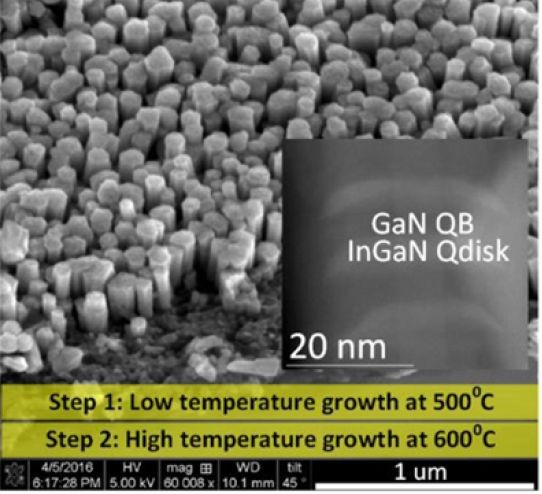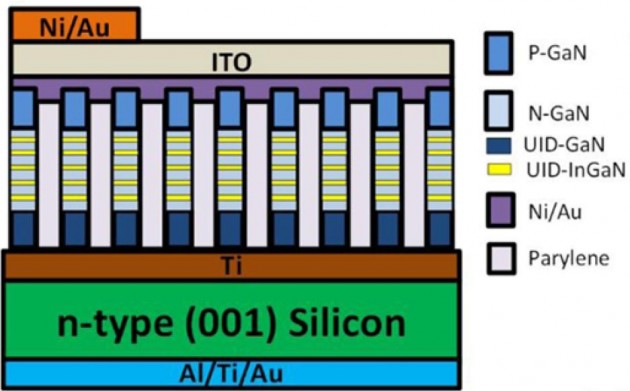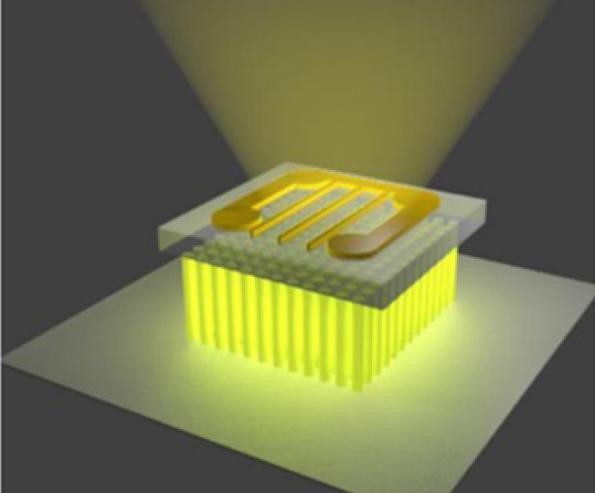Is the green and yellow difference in white light saved? Saudi scientists have done with nanowire LEDs
Date:2018-07-21
Researchers at King Abdullah University of Science and Technology (KAUST) and King Abdulaziz City for Science and Technology (KACST) have proposed a novel approach that can be The “green-yellow gap” caused by poor conversion efficiency is common in white LED applications with multiple phosphors.
20161101 LED NT01P3 SEM image of component structure using two temperature step growth method
In the research paper published in the journal ACS Photonics, "True Yellow Light-Emitting Diodes as Phosphor for Tunable Color-Rendering Index Laser-based White Light", a nanowire LED (NW LED) emitting at 588 nm is described. ), capable of growing on low-cost titanium (Ti) thin film/silicon (Si) substrate platforms compatible with CMOS processes. Its compact nanowire layer can grow to a surface density of 9x109 cm^2 with a fill factor of 88%.
The LED NT01P2 component structure shows multiple nanowires grown side by side.
Each nanowire p-i-n LED structure is embedded in an active region of a stack of 5 layers of 3 nm thick InGaN quantum discs (Qdisks) separated by 10 nm quantum barrier layers.
When operating the yellow-light nanowire LEDs alone, the researchers observed a peak emission of 588 nm and a low on-voltage of about 2.5 V at 29.5 A/cm^2 (about 75 mA on a 0.5x0.5mm^2 component). The quantum efficiency is about 39%, and the "efficiency reduction" does not occur until the implantation density of 29.5 A/cm^2 is reached.
Next, the researchers showed the benefits of mixing this yellow light with red, green, and blue laser diodes. In the actual setup, the RGB beam is used to illuminate the yellow nanowire LED, just like a phosphor, and a light scattering layer is used in the reflective configuration to add its yellow light emission to the white light mixture.
The result is a correlated color temperature of approximately 6000K and a color rendering index of 87.7.
LED NT01P1 yellow light nanowire LED
Boon S. Ooi, director of the KACST Solid State Lighting Technology Innovation Center and professor of electrical engineering, said the goal of this approach is to reduce the intensity of blue light in white light, creating a warm white light that is more friendly to the human eye, while also being based on lasers. Solid-state lighting (SSL) provides a new way to tune color temperature. “At the moment, we have patented this technology,” and this also hints at some future business opportunities.
【Close】




 +86-760-22115926 Anna Zhang
+86-760-22115926 Anna Zhang
 gaea668@263.net
gaea668@263.net



